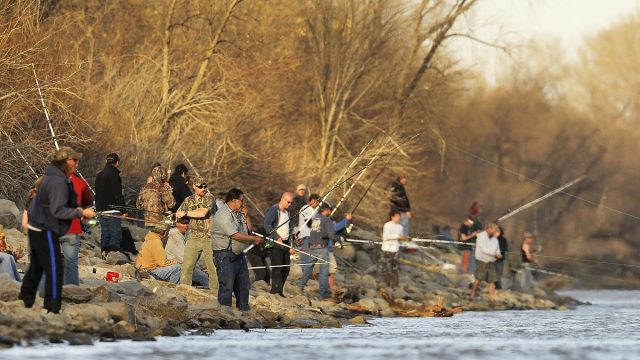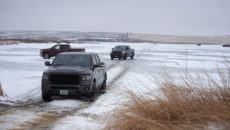Doug Leier: North Dakota's Paddlefish Population Is At Risk

In my early years with the North Dakota Game and Fish Department, I was a district game warden.
Prior to assuming responsibility for a district, new wardens learn different required skills from experienced wardens at stations around the state. My primary training warden was Kurt Aufforth, who at the time was stationed in Watford City, and my weeks with warden Aufforth coincided with the paddlefish snagging season.
Paddlefish are such a unique resource for North Dakota, and for a first-timer, working the paddlefish season was a highlight from the early part of my career.
A lot has changed since then. Paddlefish are not only unique, but their North Dakota-Montana population is vulnerable to overharvest. These fish mostly live in Lake Sakakawea, then in spring the breeding-age fish migrate up the Missouri and Yellowstone rivers into Montana to spawn.
Both North Dakota and Montana fisheries managers are protective of this paddlefish population, and have made numerous regulations changes since my first patrol as a warden nearly 20 years ago. The changes are all designed to provide a continuing paddlefish snagging experience while closely managing harvest.
This year’s paddlefish season, which starts May 1, as a few changes from last year, but before I get to those, here’s a rundown of major changes since the first paddlefish regulation was put in place in 1976.
1976 – First established daily limit on paddlefish, at two per day and two in possession.
1981 – Daily limit reduced to one, but possession limit stayed at two.
1985 — Possession limit reduced to one.
1992 – First year of tag system. Each snagger could purchase two tags.
1996 and 1997 – Only one tag allowed per snagger per season.
1996 – First year a harvest cap was established. The cap was 1,500 fish taken in North Dakota through 2002. From 2003 to the present, the annual harvest cap has been 1,000 fish.
1998 -2000 – Two tags per snagger again allowed. One tag per season allowed since 2001.
2001 – First year the paddlefish season was closed early because of the harvest cap. Prior to that it ran for the full season length, which varied from 198 days in 1976, to 46 days in 2000. Since 2002 the official season has been May 1-31, but because of the harvest cap, the most open days occurred in 2003 at 23 days. The shortest season was five days for harvest in 2008.
2002 – First year that daily snagging hours were reduced, from 24 hours a day down to 16.5 hours per day (5:30 a.m. – 10 p.m.) Daily snagging hours were again reduced to 14 hours (8 a.m. – 10 p.m.) in 2004.
2003 – First year that two days of the week – Mondays and Tuesdays – were reserved for snag-and-release only. Sunday was later added as a snag-and-release only day.
For 2014, modifications to the paddlefish season include:
- Daily snagging hours are now 8 a.m.-9 p.m.
- The 36-hour notice required to close the season is reduced to 24 hours.
- The snag-and-release-only extended season is reduced from seven to four days.
- All paddlefish snagged and tagged must now be removed from the river by 9 p.m.
- A change in the days open to snagging harvest from Wednesday through Saturday, to Tuesday, Wednesday, Friday, and Saturday.
In 2013 the state legislature passed a law that gives Game and Fish the option to hold a lottery to issue paddlefish tags. This would spread out the snagging pressure during the season, but would also mean fewer people would get an opportunity to snag each year.
Game and Fish administrators decided to try these few new regulatory changes for this year before possibly implementing a lottery. Leier is a biologist for the Game and Fish Department. He can be reached by email: dleier@nd.gov







